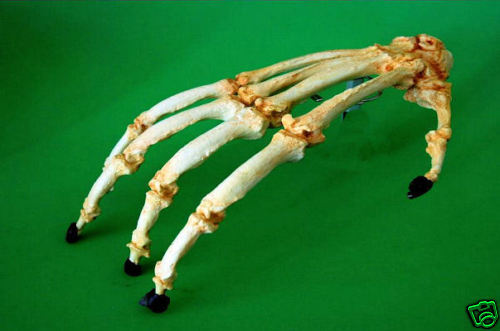-40%
Cracker Jack Coon - Raccoon Taxidermy Mount - SW10079
$ 224.4
- Description
- Size Guide
Description
Novelty Taxidermy Sales - Raccoon with Cracker JacksBrand new! Cracker Jack Raccoon taxidermy mount. This Raccoon is mounted with his front left paw in the Cracker Jack box, looking for that special treat. He has very thick, plush fur in beautiful coloring of black and gray. Claws are intact. Curious looking expression on this big "bandit". With the outstanding craftsmanship and beauty of the animal, it receives our taxidermy rating of Premier. Great wildlife piece for the shelf or mantel or an ideal gift for the sportsman.
Scientific Name: Procyon lotor
Size: 15" tall x 9" wide x 18" deep.
Ships free!
Information About the Raccoon – Procyon lotor
A raccoon taxidermy mount will make a nice wildlife decor piece and conversation starter.
Raccoons are a common sight just about everywhere. An adult raccoon will weigh between 15 and 25 pounds. A characteristic feature of the raccoon is the bandit like black mask found around the eyes. The coat is grayish-brown and the tail has rings of light and dark. They have a dense underfur to protect against the cold. They have extremely agile, sensitive and dexterous front paws, enabling them to grasp and turn knobs and untie knots. The raccoons back legs are longer than the front, making the animal appear hunched as they walk.
The raccoon is native to North America and found throughout the US, with the exception of some desert areas in the southwest. It is also found in parts of southern Canada, Mexico, and Central America. Introduced populations are thriving in other parts of the world, such as Russia and Japan. They are adaptable and do well in forests, swamps, and cities.
Raccoons are omnivorous and opportunistic, having a varied diet, eating both plants, fruits, insects and smaller mammals and eggs. They are at home along the water's edge, where they easily catch frogs, crayfish, and other aquatic animals. They’re destructive to gardens and will raid trash cans when the opportunity arises. Raccoons tend to be nocturnal but it is not uncommon to spot one during the day.












